Yamaha RX-A4A Reviewed at $1,399.00
Product Name: Yamaha RX-A4A
Product Description: 7.2 CH 8K AV Receiver
-
Design - 9.3/10
9.3/10
-
Audio Quality - 9.3/10
9.3/10
-
Inputs / Ports - 9.3/10
9.3/10
-
OS, Apps and Features - 9/10
9/10
-
Price / Quality - 8.9/10
8.9/10
Summary
Reviewed at $1,399.00
Pros
- Excellent audio output
- Aventage premium quality
- Great DSP capabilities
- All available ports are HDMI 2.1
Cons
- Many HDMI features will be unlocked in the future
- The remote could be simpler
- No front HDMI port
- Less legacy ports than the competition
Cheapest Places to Buy :
*We are a reader-supported website. When you buy through links on our site, we may earn a small affiliate commission at no extra cost to you. Home Media Entertainment does not accept money for reviews.*
It seems that Yamaha had decided to refresh their entire AV receiver lineup but rather than changing all their units in one go they split the changes into two parts with the first batch including the more budget friendly RX-V6A and RX-V4A along with the smaller of the Aventage units, the RX-A2A. The second batch came with the refresh of the higher end Aventage receivers that included the RX-A4A, the RX-A6A and the top of the line RX-A8A. And so today in our Yamaha RX-A4A review we will be testing the best 7.2 channels receiver they have in their arsenal at the moment.
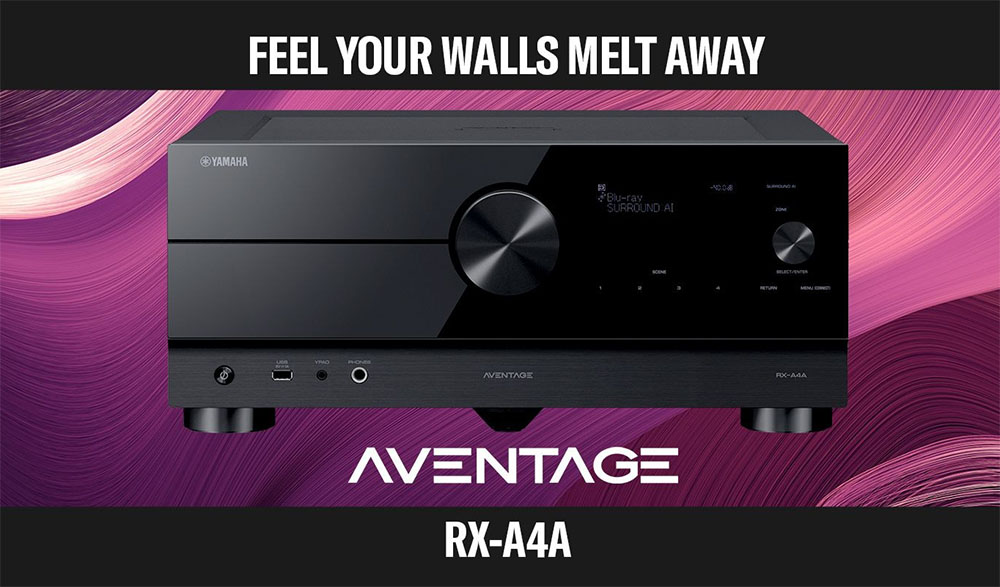
The last trio of receivers that Yamaha updated share a lot of common characteristics. Obviously they pack different number of amplifiers, power output and a few more specialized features but the general feature set has more similarities than differences. And as such the RX-A4A offers plenty of options if you are not looking for a receiver that has more than 7 channels of amplification.
So let’s see what the RX-A4A includes in its specs. As we said this is a 7.2 channels AV receiver with 110 watts of power (8 ohms, 0.06% THD, 2 channel driven). We get the usual Dolby Atmos and DTS:X along with Dolby Surround, DTS Neural:X and Dolby Atmos Height Virtualization. We also find Yamaha’s Cinema DSP HD3 and Surround:AI which are only used in the top three Aventage models while it comes packed with specific Aventage enhancements in its hardware for better audio output. As for features we get the YPAO Sound Optimization, high resolution audio, WiFi and Bluetooth streaming, MusicCast, Airplay 2, multiple zone capabilities and most importantly HDMI 2.1 support. But more on these shortly.
The Yamaha RX-A4A seems to be an excellent 7 channels receiver. If previous Aventage releases is anything to go by we expect the RX-A4A to perform admirably but this can only be confirmed when we actually put it to the test. Lets not keep waiting then…
Design
Having recently reviewed the RX-A8A, the RX-A4A sports exactly the same design and the only difference between the two seems to the smaller depth this one has. It measures 17-1/8” x 10-5/8” x 17-3/8” (435 x 270 x 442 mm) but as always you can save a bit of height by turning the antennas in a horizontal position which lowers its height requirements to just 7 1/2” (191 mm). The receiver weights 35.7 lbs (16.2 kg) making it noticeably lighter than Yamaha’s flagship which was to be expected due to the less amplifiers included in the chassis.
Featuring an almost entirely front gloss side, the volume knob has been repositioned in the middle compared to previous years and the display screen got updated as we get an LCD variant that is placed on the right side of the volume knob. On the far right a second smaller knob is used for navigating the display screen and selecting input sources.
Above the smaller knob we find three small indicators for Zone, Pure Direct and Surround:AI (with the last one missing only from the RX-A2A which lacks that feature) while on its right side, under the LCD display, there are some touch controls with four SCENE buttons, Return and Menu.
On the lower part of the front face there is a small part that features a matte surface and this is where we find a circular button on the far left for power along with a single USB port for connecting external storage, the YPAO microphone input port and the usual Headphones jack. There is no analog inputs anymore which we don’t find all that surprising but there is no HDMI input either which we would love to have for easy access. Hopefully in the future manufacturers will make this a standard feature to have across their entire lineup.
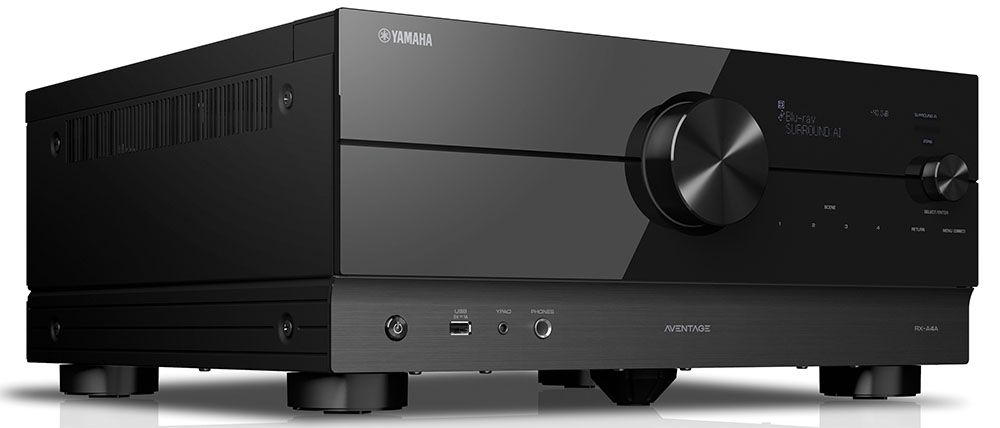
No real surprises here. The unit is like for like in design with the rest of the Aventage releases in order to keep parity between their models.
And while in terms of looks the differences between the Aventage units are small the biggest differences are on the inside. First of all as with all Aventage models we find a high slew rate amplifier. The slew rate measures how quickly an amplifier can respond to a rapid change of input level, which contributes to delivering a precise signal transmission and is especially effective with high resolution audio signals.
The difference we find in the RX-A4A compared to the two bigger units is in the DAC being utilized here as this one comes with a single ESS SABRE ES9007S Premier Audio DAC which is a step down from the dual ESS SABRE ES9026PRO Ultra DACs that we found in the RX-A8A. What is the same is the Qualcomm QCS407 high precision DSP that supports Dolby Atmos and DTS:X immersive home audio.
One element that seems to be very characteristic in the entire Aventage receivers is the fifth foot that is placed directly in the middle underneath the receiver. The Anti-Resonance Technology (A.R.T.) Wedge, as Yamaha calls it, dampens vibrations from the power transformer, power transistors and heat sinks, as well as vibrations that might be caused by the sound from the speakers providing dynamic sound and focused, accurate reproduction. In the RX-A4A it seems that this foot has been brought towards the front, probably for best results from Yamaha’s testing.
As for the supplied remote the one that comes with this unit is very similar to the one we used with the RX-A8A with a single difference. The Zone switch at the top which now only has a Zone 2 option instead of the multiple ones that were supported in Yamaha’s flagship.

Overall the layout has improved compared to what Yamaha has been offering in their lower tier units but still it’s cluttered with buttons that most of the time you will rarely use. Yamaha gives a lot of attention to its Scenes feature and thus has positioned these buttons in a prominent place.
In general it’s a pretty long remote and it has too many buttons with many of them that will be rarely used. At some point AV receivers have to go the way of TVs with more simple remotes and more advanced user interfaces.
The RX-A4A has the quality you would expect from an Aventage unit. Yamaha’s high standards can be seen both in the interior and also in the new refreshed look of the chassis.
Audio Quality
The receiver supports up to 7 channels and this means that if you want to go for an Atmos enabled system the unit can support up to a 5.2.2 channels configuration. As usual we get support for both Dolby Atmos and DTS:X, and obviously all the older audio mixes like Dolby TrueHD, DTS-HD Master Audio, Dolby Digital Plus, Dolby Digital and DTS. Unfortunately no Auro-3D is supported in this one as this is only kept for the two top receivers, the RX-A6A and the RX-A8A.

But except from this omission the receiver seems to come with all of the rest audio features that the two bigger models offer. Up-mixing technologies are as usual included so we do get Dolby Surround and DTS Neural:X that are the standards for most receivers nowadays and can up-convert legacy tracks like stereo mixes into full surround audio.
We also find Yamaha’s top DSP technology, the Cinema DSP HD3 which is also included only in the top 3 Aventage releases in their refreshed lineup.
If you don’t know what Cinema DSP HD3 is, it’s Yamaha’s proprietary sound field creation technology that utilizes multiple CINEMA DSP engines and permits lossless decoding of 192kHz signals, while providing 3D processing that gives the sound field an extra vertical dimension. With Cinema DSP the receiver is capable of recreating various audio spaces like concert halls or sport arenas which can bring a whole different level of immersion.
The unit comes with the maximum number of DSP programs that Yamaha has made available which is 24 which gives you plenty to try out. This stereoscopic sound field technology is a really interesting one and there are cases where it can boost the overall volume and immersion of sound but there are also a lot of cases where the end result can feel very artificial. Keep in mind that a lot of processing is at play here and we are not very fond of processed sound that alters the original mix very much. But it’s nice to have this system as you may find it more to your liking than us.

With the use of Cinema DSP HD3 the receiver is also capable of offering various virtual features. First of all there is Virtual Cinema DSP which can reproduce up to 7 channels of surround sound without the need to have any surround speakers connected. Next we get Virtual Cinema Front which lets you position your surround speakers at the front and still get surround activity at the back of the listening position. This can be very handy in case you are limited by space and you cannot place your surround speakers where they should really be.
Another feature we get is Silent Cinema. With that you can enjoy surround and sound field effects by only using your headphones. There is also Virtual Presence Speaker (VPS) support as these can be created without any actual presence speakers available. With the Virtual Surround Back Speaker (VSBS) feature you can get activity when there are no actual surround back speakers available.
Lastly what was missing in the previous years was Dolby Atmos Height Virtualization. If you don’t have the option to add in-ceiling or upward firing speakers in your system, Dolby Atmos Height Virtualization technology can simulate the Atmos experience. Unfortunately what is missing is DTS Virtual:X as Yamaha has not included this one as some other manufacturers do.
A feature that makes a return from the previous models and it was only included in the top tier releases is Surround:AI. Now this technology, that is built-in the DSP, optimizes the surround effects in real time by analyzing each scene and focusing on specific sound elements like ambient effects, music, dialogue and special effects.
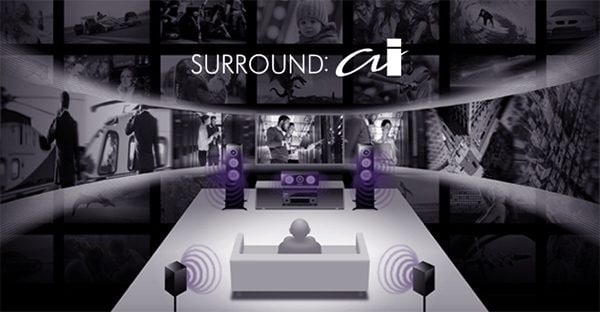
This can be a nice feature for those that don’t want to mess around with the individual DSP programs and prefer a more automated system to handle everything but as with all these technologies that are available, the source content will very much determine the actual result. Specific content can benefit from it while that was not always the case with the end result feeling much more altered than what we would like. But it’s good to have it as a feature to try it out.
When it comes to its internal amplifiers the receiver can output 110 watts per channel (8 ohm, 20 Hz – 20 kHz, 0.06% 2ch drive). Obviously the more channels in use the lower this number goes. Unfortunately all manufacturers keep giving us only 2 channels ratings and it is increasingly hard to find out actual numbers for full surround use.
For our movie testing we opted for a 5.1.2 channels setup with two height speakers placed above the main front channels and a single subwoofer that was placed at the front left corner of our testing room. The film we decided to try out was the 4K UHD version of Godzilla vs Kong with its explosive Dolby Atmos sound mix.
We can argue about the quality of the story but when it comes to its technical merits everyone agrees that this film has surely reference quality sound and is exactly what we needed to test out this new Yamaha.
There was not a single moment where we didn’t feel like we were thrown right into the middle of the action as the RX-A4A did an amazing job at creating a full immersive surround bubble. The material helped a lot and so there was activity in all directions and all axis. In the scene where Godzilla attacks Kong and the naval group, the whole sequence from beginning to end is a testament of how good surround sound can work on a scene.

The front soundstage was obviously the most prevalent one but not the only one. There was excellent depth and nice extension while dialogue was kept isolated in the middle with excellent clarity even during heavy action scenes. Panning effects were impressive with fighter jets flying all over the place, missiles and cannon fire turning our test room into a battleground.
The Yamaha did excellent work on the details and there was so much clarity and resolution to each sound that really elevated each scene. When Godzilla battles with Kong on the aircraft carrier there is so much information that it’s dazzling. Small explosions, metal parts fly all over the place, the water displacing as this huge metal construction is pushed in the water like a toy, everything sounded just right.
Surround activity may be more obvious but we should mention the excellent Atmos performance also. The overhead layer had good height and enough activity and energy to push the boundaries of the immersion bubble above our heads. The Atmos speakers may not have been so obvious as all the other channels but still played their part in upping the overall outcome.
Obviously when one mentions a film like this, it would be a shame not to talk about the explosive bass and the Yamaha did the best out of it in order to provide our subwoofer with all the necessary low end information. Bass was in one word spectacular. Deep bass with shaking explosions and a thunderous LFE that will hit your whole body more than once and you will keep asking for more. We enjoyed the performance of the receiver so much that we kept watching for much more than what our review testing needed us to.
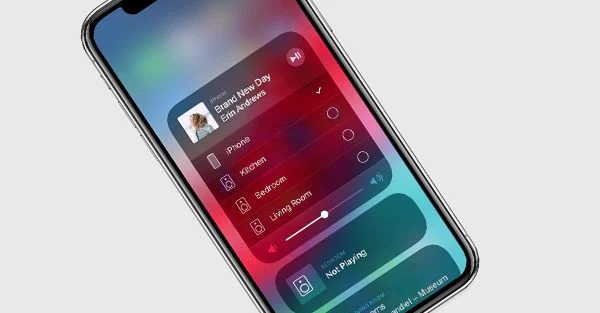
In the end the Yamaha is a receiver that can do it all. It is not afraid of rendering even the tinniest of details, it will provide a grand soundstage when the material asks for it and it can be delicate when a specific scene requires it. The front performance was impressive, the surround activity more active than ever, dialogue was crystal clear, Atmos effects supplemented the action nicely and the bass was kicking us in the butt and we never complained. What else can you ask for?
We also tried to push the volume to more than what we would call acceptable levels and the Yamaha didn’t seem to buckle under the weight. Yes, obviously it doesn’t have unlimited power and certainly doesn’t have as much juice as the flagship RX-A8A we tested recently but no matter how much we pushed it, it never felt like loosing its balance.
As for music the receiver supports not only the usual lower quality audio formats like MP3, WMA and AAC which by the way all of them can go up to 320 kbps but can also playback High Resolution Audio in the likes of FLAC (384/24 bit), ALAC (96/24 bit) and WAV/AIFF (384/32 bit) files. DSD streaming is also available for up to 11.2 MHz. It seems that Yamaha has updated the specs in their newer releases as previous models could support FLAC and WAV files only up to 192kHz.
The receiver also features Yamaha’s Compressed Music Enhancer that is capable of enhancing lower quality audio like MP3 files to near High Resolution Audio quality levels. Compressed Music Enhancer can also work through Bluetooth which usually lowers the audio quality to meet the necessary transmission requirements. This is a feature we have seen in almost all their releases and although you shouldn’t expect a day and night difference in certain cases it can really help with lower quality content.

Next, as we usually do, came our music tests and as such we selected a few favorite tracks in FLAC format that we streamed through the front USB port for the best quality possible. Yamaha receivers are famous for the music reproduction and we were excited to see how the RX-A4A would do here.
The unit was every bit as good as the previous Yamaha releases along with some of the newer models in their refreshed lineup. Excellent attention to details, noteworthy balance and very pleasant tonality. The Yamaha did its magic with the front soundstage with exceptional sound imaging and pinpoint accuracy of all the sound elements.
Although purists will surely will want to keep the pure direct option here we did try the various DSP Yamaha offers and some of them were actually good. Although some of them did feel a bit over-processed Yamaha has done a good job at how much processing these apply to the original mix. So in case you are not bothered in the unit altering the original song a bit you may find them to your liking.
Once again the receiver proved to be very balanced and stable across all frequencies. Nice mids that were accompanied by playful highs and thumping lows across the entire dynamic range. The unit never went overboard and always knew its limits and what it was capable of reproducing.
As we like to do in our reviews we tested the RX-A4A with various genres including heavy metal, jazz, classical music, some electronic and even some opera and we really couldn’t find anything bad to say about it. It sounded great in all kinds of music and it will surely be a feast for your ears if you decide to use this for your music pleasure.
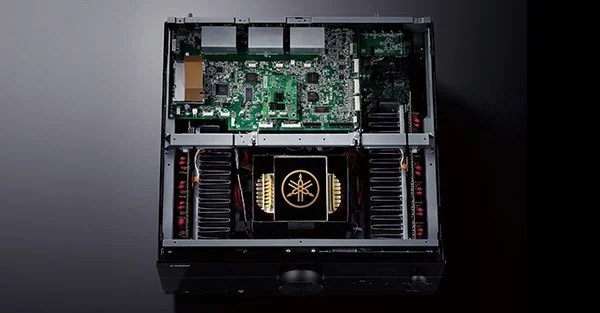
Something that we keep saying in may of our reviews is that when it comes to AV receivers it may not be the preferred way for many audio purists. But having everything in one box is very practical and space saving and in the end if you can have top quality sound being output by a single box then why not, especially if your space does not allow for more flexibility.
The Yamaha RX-A4A may not be the monster of a receiver like the RX-A8A was, but in terms of quality output, attention to details and delicate handling of all sound elements it has nothing to envy compared to its bigger brothers.
Ports and Connectivity
Yamaha is more conservative when it comes to connectivity options and this is very obvious in the RX-A4A. When looking at the ports available you would think this is a lower tier unit or something. But to be honest we do get Yamaha’s thinking. After all the HDMI connection is the prevalent one for many years now. To add a vast array of legacy ports only adds to the overall cost and we think that seeing many top tier units feature excessive amounts of legacy connections is pointless.
But let’s see what is included here. First of all we already mentioned above that at the front we get a headphones jack, the YPAO microphone port and a single USB for connecting external storage. What is missing is any kind of analog ports, which we don’t mind too much, but also there is no HDMI port, which we do mind. It’s a bit unacceptable for such a premium device not to include a single HDMI input at the front which can be so useful in many situations.
Now, as we turn the unit around we find 9 speaker terminals, from which only 7 can be used for the main zone, along with 7 HDMI inputs at the top and 3 HDMI outputs. The impressive thing with these new Yamaha receivers is that they offer more HDMI 2.1 ports than all competing brands in 2020.
Keep in mind that from the refreshed lineup only the RX-A4A, the RX-A6A and the RX-A8A come with all 7 HDMI inputs being 40Gbps and HDMI 2.1 enabled. The next in line, the RX-A2A has only 3 HDMI 2.1 inputs which we still are plenty for any kind of use.
But there is a catch here. It seems that Yamaha has, for the time being, locked HDMI 2.1 functionality from all the available ports. So while these support the full range of HDMI 2.1 features most of them will become available with a firmware update which still has not been released when we published this review.
The HDMI 2.1 ports in the Yamaha unit support up to 40Gbps of bandwidth along with 4K UltraHD Video (include 4K/60, 50Hz 10/12bit), 3D Video, ARC (Audio Return Channel), eARC (enhanced Audio Return Channel), HDMI Control (CEC), Auto Lip Sync, Deep Color, “x.v.Color”, HD audio playback, 21:9 Aspect Ratio, BT.2020 Colorimetry, HDR Compatible, Dolby Vision and Hybrid Log-Gamma.
The expected firmware update will unlock the full potential of these ports and will add all HDMI 2.1 centric features including 4K@120Hz, 8K@60Hz, HDR10+, ALLM, VRR, QMS and QFT support. Also keep in mind that the RX-A4A, along with the rest of the new Yamaha lineup, is not plagued by the HDMI 2.1 bug that affected many of the 2020 AV receivers. So when Yamaha unlocks these ports with the update all sources including the PS5, Xbox and any kind of PC rig will be handled as expected…hopefully.
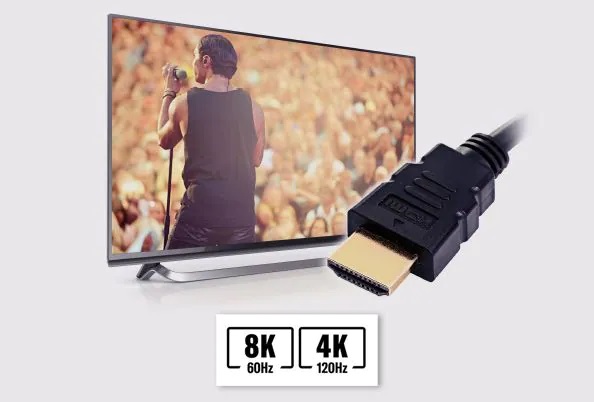
As for the rest of the ports, there are 3 analog stereo inputs with another one dedicated to phono, 1 coaxial and 2 optical digital inputs, 7.2 channels pre-outs, a Zone 2 analogue stereo output, two 12V trigger outputs, two mini jacks for remote input and output, an Ethernet port for wired connection to a local network and the usual FM/AM and WiFi/Bluetooth antenna connectors.
The receiver comes with built-in WiFi that supports both 2.4 and 5 GHz networks while it also comes with Bluetooth v4.2 which supports SBC and AAC codecs.
Having all the HDMI inputs and outputs HDMI 2.1 enabled is the big difference here. Although their full potential is still locked, when Yamaha releases an update to enable HDMI 2.1 functionality the RX-A4A will be among the best options for gamers.
OS, Apps and Features
As far as extra features the RX-A4A is very similar with the RX-A8A we reviewed recently. Actually the entire Aventage series share a lot of similarities in their feature set. The most notable difference is the different YPAO version and the number of Zones supported. So in part this section of our review is similar to what we observed in our RX-A8A review but we will be making necessary changes whenever we deem necessary.
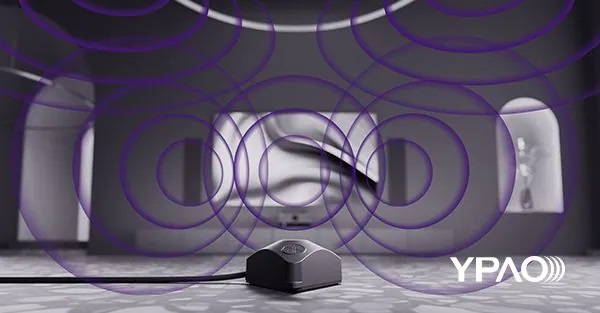
In the RX-A4A we get the YPAO Sound Optimization with R.S.C. (Reflected Sound Control), 3D, 64-bit High Precision EQ Calculation, Low Frequency mode and Angle Measurement…yeah a long name we know! Basically it’s the same version we had seen in the flagship RX-A8A.
YPAO analyzes your room acoustics, measures speaker characteristics and adjusts unwanted reflected sounds to optimize every channel of your home theater. In addition the R.S.C. (Reflected Sound Control) feature is responsible of correcting early reflections and provides DSP Effect Normalization through the Cinema DSP parameters according to these reflected sounds. This results in a more balanced outcome compared to the basic system and it can improve Dolby Atmos and DTS:X performance.
YPAO 3D optimizes the sound parameters automatically in order to provide a much improved 3D soundfield with CINEMA DSP HD3, Dolby Atmos and DTS:X while multi-point and angle measurements correct audio reflections and also achieve the best sound possible by analyzing eight different listening positions. Lastly the 64-bit, high-precision EQ calculation is used in order to achieve the most natural acoustics possible compared to the less capable versions.
By following the on-screen instructions you can finish the whole process relatively easy and the YPAO will even warn you if there is some problem with your setup. In general these calibration systems offer pretty good settings and especially for those that are not used to make manual tuning it can be an excellent helper.

But before you even make this sound calibration you need to follow the initial setup in order to connect everything to the receiver. Things are pretty simple here if you have done some basic connections before and you shouldn’t have any trouble finishing this part very fast.
But even if you have any trouble Yamaha has created the Yamaha AV Receiver Setup Guide App which is a dedicated setup app that you can install to your mobile device, choose the appropriate AV receiver and follow the instructions to make the necessary wire connections. Yamaha is the only manufacturer that offers such an app, as far as we know, for guiding you through the installation process.
This app if free to download and is available for both iOS and Android devices and provide you with very simple visual information on how to connect everything for your specific system. A nice small app and although not many are going to use it, if you are are totally new to all this then you will certainly find this one very handy.
A common feature in most AV receivers is ECO mode that you can enable and let the receiver manage its power output in order to achieve power economy. But if you want the unit to perform at its peak power at all times then we suggest you to better leave this setting turned off. We would only recommend this if your unit becomes really hot due to being in a closed environment and you have no other way of cooling it down, then this could potentially help a little. But for that there are additional cooling solutions to consider also like the AC Infinity AIRCOM T8.
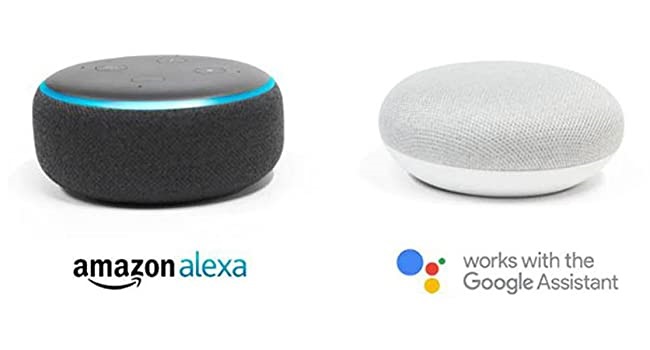
Another standard feature is voice control. Yamaha made sure to add support for both Amazon Alexa and Google Assistant but obviously if you want to use these you will need to have an external device like an Echo Dot or Google Home device. You also have the ability to use Apple’s Siri voice control through the Airplay 2 app in your mobile device.
And since we mentioned Airplay 2 we should talk about the streaming and multi-room capabilities of the receiver. As with most Yamaha receivers MusicCast is supported and with it you can connect various MusicCast enabled devices to the receiver. This can be done through the MusicCast Controller mobile app that is available for both Android and iOS devices. If on the other hand you are more of an Apple guy the included Airplay 2 app will do for you and let you connect various Airplay 2 devices to the unit. The Airplay 2 app is available in the Apple store for you to download.
As far as its multi-room capabilities this is where the unit is slightly different than the models above it, as this one is capable of supporting only one more zone. So the best you can do is a 5.1.2 + Zone 2 configuration.
But MusicCast and Airplay 2 are not only capable at creating a multi-room environment as they can also be used to stream music online through various streaming services. Many of the most known names are available like Amazon Music, Spotify, Pandora, Napster, SiriusXM, Tidal, Deezer and Qobuz to name a few.
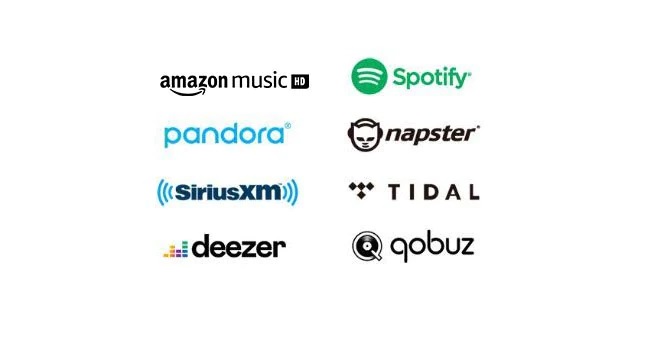
But streaming is not restricted only to it’s online services as you can also use the receiver to stream audio from a NAS server or network drive you have connected to your local network. We already mentioned above about it’s USB streaming capabilities so the last thing we need to mention is its Bluetooth support. The unit comes with Bluetooth v4.2 and it can be used to stream music to a Bluetooth enabled speaker or headphones.
But except from the above features there are many more on offer and we will try to include everything here. One is HDMI to HDMI up-scaling to 4K resolution if you prefer this to be done by the receiver instead of your TV. Now if you should use this or not depends on how capable your TV is, so it is our suggestion you try both ways in order to determine which one is better. There is also HDMI-CEC with which you can use the TV’s remote to control the receiver and thus lower the number of remotes you have to use in your home theater.
Bi-amp capability could not be missing obviously from such a premium receiver and you can drive the high and low ranges of the front channels by using independent amplifiers which can improve the acoustic result and performance of the front soundstage.
Lastly there is support for wireless speakers including the MusicCast 20 and MusicCast 50 surround speakers. Also there is the MusicCast SUB 100 subwoofer that you can connect to the unit. This way you are not bound by wires and you can place the speakers wherever you want in your room.
The receiver offers plenty of online and offline features and surely can satisfy even the most demanding of users. It is missing a couple of features found in the higher tier releases but these are minor and in general the RX-A4A can be considered a feature complete model.
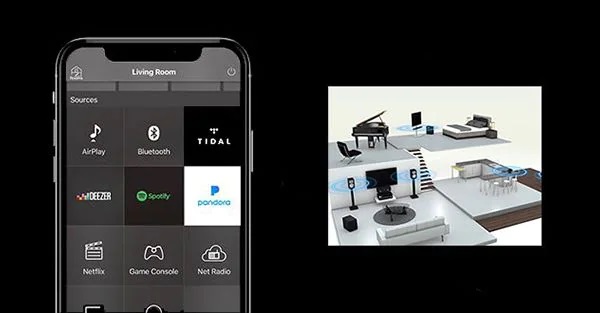
Final Thoughts
The RX-A4A is every bit as good as you would expect from Yamaha and from an Aventage AV receiver in particular. It was about time that we got the new models in our hands and to be honest it was worth the wait. The RX-A4A may not be the best there is but in its respective category it should be high on your list for consideration.
The receiver has enough power for its category while in terms of pure audio output the RX-A4A was no shy of clarity or details. It sounded delicate with music and playful with movies. Its build quality had the usual Aventage standards, its feature set is more than satisfying while the inclusion of 7 HDMI 2.1 inputs will surely will turn many gamers to Yamaha’s camp.
As for the downsides more or less we will repeat what we said in our RX-A8A review. Many of its HDMI 2.1 features are still locked and waiting for a future firmware upgrade that will unlock their full potential which is not exactly ideal when you are ready to pay such a premium price. Also the remote is not the best of designs we have seen while we definitely miss a front HDMI input for easy access.
In the end the Yamaha RX-A4A should be considered one of the best 7.2 channels AV receivers currently available. It has the quality and finesse of Yamaha all over it and there is no better guarantee than this for your purchase decision.
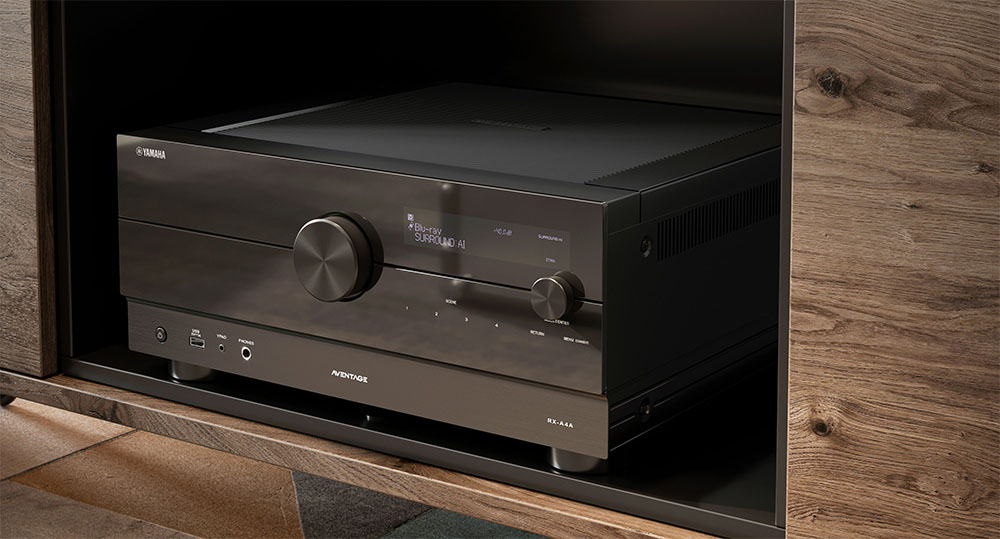
For more reviews you can check our dedicated 7 channels 8K AV Receiver reviews list or even look at our Product Reviews Table where you can find the brand and specific product you are looking for.
Cheapest Places to Buy :
*We are a reader-supported website. When you buy through links on our site, we may earn a small affiliate commission at no extra cost to you. Home Media Entertainment does not accept money for reviews.*
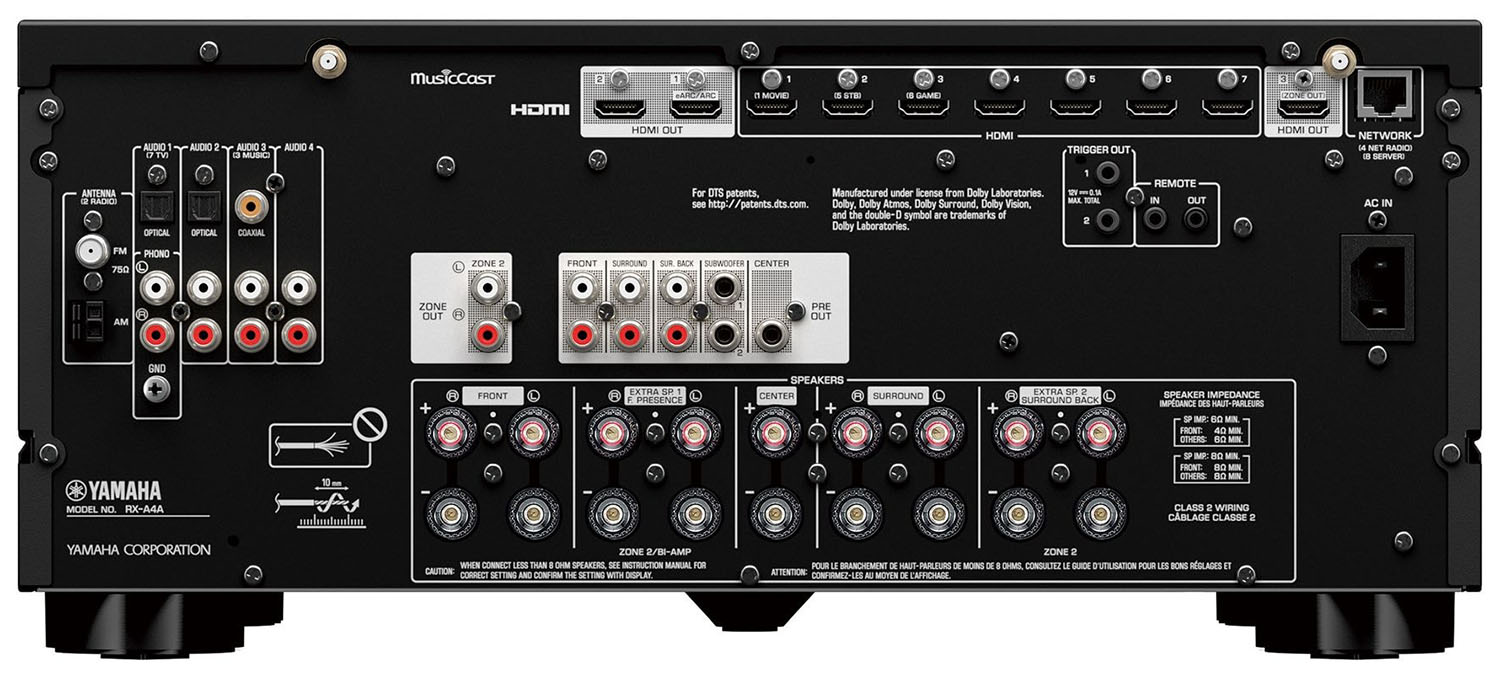
I have tried a few different brands but for some reason I always turn back to Yamaha. I was waiting for a receiver that would be all HDMI 2.1 and the A4A seems to be the one I will replace my old one. It sucks a bit that HDMI 2.1 is not enabled yet but I am willing to wait for that. Thanks for the thorough review.
Yamaha has been a very respectable brand in AV receivers for many years now. Yes the HDMI 2.1 bit leave a bitter taste but it will surely be forgotten once Yamaha enables it in all their new releases.
Excellent review and an amazing receiver from Yamaha as always. I had a previous Aventage receiver and it was one of the best I ever had so if I choose to update Yamaha will be for me once again. I am surely drooling over these new models. Although I would probably go for the A6A as I would like to have four Atmos speakers.
Hello Sotiri. The A6A is the last of the new models that we haven’t tested yet but we have it for testing and our review will be posted soon. Keep an eye on that soon 😉
I’ve been leaning towards the RX-A4A, but very tempted by the Marantz SR5015 as it’s stock right now.
Any thoughts on if the Yamaha is worth waiting for?
Thanks!
Hello Frank. Unless there is a feature that you desperately want on the Yamaha I would say go for the Marantz since you can get it right now. I always hate to wait for something I want to buy unless there is absolutely no alternative. But this is just me…
I have an older Marantz surround that has always had a bit of a main power transformer hum. My old Yamaha has been quiet as a mouse. I think the difference is that Marantz used a toroidal transformer which is susceptible to voltage noise and distortion. The Yamaha used a standard transformer design and is less susceptible to line noise
Hello Bob. Not all Marantz models have toroidal transformers. As in some other brands only the top tier releases get it. For example in their latest lineup only the SR8015 uses a toroidal one while all the rest use the more standard EL core type.
Is there any word from Yamaha when they release the update to enable hdmi 2.1 gaming features for the RX-AxA receivers?
Hello Sebastian. It seems that a few hours ago Yamaha released a new firmware update for RX-A2A/RX-V6A and TSR-700 that enables support for 4K/120Hz and HDR10+. So I guess an update for the rest of the Aventage series should not be far away now.
Hi Stratos,
For greater use in music through spotify, tidal, youtube, in a 2.1 configuration, will it be worth the higher investment in an A4A or with a V6A will it be enough? Will I notice a difference? The current speakers are a qacoustic concept 20.
I’ve seen a video on the net where they compared the sound of a yamana A2A with a marantz and the denon x2700h and I liked the sound of the yamaha better. It was a youtube video and it won’t be a very reliable source, but from what I’ve read the Yamahas will have a better sound in music, although this is very subjective.
As you said Paulo, it’s very subjective. I can give you my opinion but that doesn’t mean that you would agree with me. The A4A and the V6A use different DACs but how much of a difference each person can hear is not standard. Some may hear the difference while other not at all. If it was me I would go for the A4A if my budget would allow it. Not so much because of the sound quality, don’t expect to hear any major differences anyway, if any. But because the A4A has a few features that if it was me I would definitely want to have them.
Hi Stratos.
I read both this review and your review of the Anthem MRX 540. (Thanks!)
I’m only interested in 5.1 and stereo sound quality. I’m not really worried about other features so much.
Which would you recommend from a sound quality and music perspective?
(Compromises of using AV receivers notwithstanding…)
Anthem’s whole marketing is about sound quality first.
The Yamaha however, is heavier at 16kg, so I assume you’re getting more copper and iron.
Both units are comparably priced in my area.
Appreciate any insights!
Hello Raymond. Being heavier doesn’t mean much. It’s a matter how this extra weight is utilized. If sound quality only matters to you and nothing else then maybe I would give a very small advantage to the Anthem. But really the difference is not big and you may not even notice any difference in normal use. I would tell you to go for the cheapest but since you said both are equally priced then the Anthem will be great for you.
Thank you sir. I appreciate the direct reply!
No problem Raymond. Let me know if you need anything else!
Hi Stratos
I’ve read your reviews about the Yamaha Aventage RX-A4A and was very impressed with your thorough review. Anyhow, I’ve pretty much been considering the RX-A4A along with the Pioneer Elite VSX-LX505 and Onkyo TX-RZ50.. When comparing the Pioneer VSX-LX505 and Onkyo TX-RZ50 with the Aventage RX-A4A, it appears according to specs, the Aventage RX-A4A has a major con with it’s lower power rating of 410W compared to both the Pioneer Elite VSX-LX505 and Onkyo TX-RZ50 which have power output specs of 850W respectively.. Needless to say, I’m very concerned with the Yamaha Aventage RX-A4A’s power output of 410W as not quite having enough juice when connecting to an external amp, nor able to handle larger speakers such as Magnepan 7’s which require higher wattage when compared to both the Onkyo TX-RZ50 and Pioneer VSX-LX505 which have significant more power output of 850W.. In addition, the Pioneer Elite VSX-LX305 7.2 channel receiver also has a higher power output of 750W over the Yamaha Aventage RX-A4A with its maximum power output of 410W.. Therefore, would you still recommend the Yamaha Aventage RX-A4A or would you recommend the Onkyo TX-RZ50 and Pioneer VSX-LX505 instead, due to their higher power output of 850W?
Thanks in advance,
-Rocky
Hello there. While we could talk about this in much more detail the fact that recently Onkyo filed for bankruptcy would put me in second thoughts regarding their Onkyo and Pioneer brands. The RZ-50 is an amazing receiver and surely will not stop working even if Onkyo goes finally under but if you ever need any support do you know if you will be able to get it? Onkyo is in too much of a flux right now and personally I wouldn’t feel comfortable getting a product from them that I don’t know if it will still be supported tomorrow. Yamaha on the other hand is a much safer bet at the moment.
Hello Stratos,
In regards to the recent bankruptcy filed by Onkyo Home Entertainment of Japan.. Perhaps the attached source link and statement by Onkyo electronics parent company ” Premium Audio Company LLC” will reassure customers the bankruptcy filed by Onkyo Home Entertainment of Japan does not apply to Onkyo Electronics Corporation , owned by “Premium Audio Company”
Look forward to your feedback
-Rocky
https://www.prnewswire.com/news-releases/premium-audio-company-llc-comments-on-onkyo-home-entertainment-bankruptcy-filing-301548155.html
Premium Audio Company, LLC Comments on Onkyo Home Entertainment Bankruptcy Filing
NEWS PROVIDED BY
Premium Audio Company, LLC
May 16, 2022, 14:00 ET
SHARE THIS ARTICLE
Premium Audio Company, LLC, through a joint venture with Sharp Corporation acquired certain assets of the audio/video business of Onkyo Home Entertainment Corporation in September 2021 – this latest filing has no impact on operations and is unrelated to the assets acquired
INDIANAPOLIS, May 16, 2022 /PRNewswire/ — Premium Audio Company, LLC, (“PAC”) a wholly owned subsidiary of VOXX International Corporation (NASDAQ: VOXX), today provided comments regarding Onkyo Home Entertainment Corporation’s (“OHE”) bankruptcy filing with the Osaka District Court. PAC’s statement was made in response to misleading media reports regarding the Onkyo brand, which was acquired through a joint venture between PAC and Sharp Corporation in September 2021 and has grown considerably since.
On May 13, 2022, OHE filed for bankruptcy protection in Osaka, Japan. This filing did not include the assets that were previously purchased by PAC and Sharp. The joint venture between these companies acquired the Onkyo and Integra brands, including all intellectual property, and took responsibility for product development, engineering, sales, marketing and distribution of Onkyo’s home entertainment business. The joint venture also assumed all manufacturing of these products, which includes a variety of A/V and stereo receivers, amplifiers and hi-fi components under both the Onkyo and Integra brands.
The Premium Audio Company, through its 11 Trading Company (“11TC”) subsidiary, began as a distributor of the Onkyo, Integra, Pioneer and Pioneer Elite brands in July 2020. In April 2021, 11TC became the exclusive US distributor of the Teac and Esoteric audio brands and in September 2021, Premium Audio Company through its joint venture with Sharp, acquired the Onkyo and Integra brands, and established a licensing and distribution agreement with Pioneer Corporation. Sales of these branded products are all through 11TC, which grew from $13.7 million in revenue in Fiscal 2021 to $59.4 million in Fiscal 2022, with Onkyo branded products #1 by volume.
Paul Jacobs, President and Chief Executive Officer of Premium Audio Company stated, “Demand for Onkyo and Integra products has been very high and we expect this to intensify in the coming years. We have been working very closely with Sharp to ramp up production and have grown our business significantly since the acquisition was completed. We have big plans for Onkyo and the other brands sold through 11TC and as we build production and expand distribution, believe sales will more than double in the near-term. Rumors or any statements to the contrary about the Onkyo brand are simply unfounded and misleading.”
About Premium Audio Company
Established in 2020, Premium Audio Company is the most innovative, complete, and premium audio solutions provider in consumer technology. We connect people to their passion for entertainment. Premium Audio Company is comprised of three subsidiaries and includes some of the most legendary and revered brands such as Klipsch, Jamo, Mirage, ProMedia, Magnat, Heco, Mac Audio, Onkyo, Pioneer, Pioneer Elite, Integra, Teac, and Esoteric.
About VOXX International Corporation
VOXX International Corporation (NASDAQ: VOXX) has grown into a leader in Automotive Electronics and Consumer Electronics, with emerging Biometrics technology to capitalize on the increased need for advanced security. Over the past several decades, with a portfolio of approximately 35 trusted brands, VOXX has built market-leading positions in in-vehicle entertainment, automotive security, reception products, a number of premium audio market segments, and more. VOXX is a global company, with an extensive distribution network that includes power retailers, mass merchandisers, 12-volt specialists and many of the world’s leading automotive manufacturers. For additional information, please visit our website at http://www.voxxintl.com.
Premium Audio Company Contact
Investor Relations for VOXX International Corporation
Jill Escol, VP Global Brand Communications
Glenn Wiener, President and CEO
Email: [email protected]
Email: [email protected]
SOURCE Premium Audio Company, LLC
Hey Rocky. Thanks for your reply. Surely I don’t question the above statement and I really hope that Onkyo can find safer paths in the future as it’s a brand that really deserves it but since all these developments are relatively recent I wouldn’t go for a brand until the dust is settled. I mean, look at the RZ-50 for example. It was practically impossible to find a unit anywhere even months after its release. Only a few of the lower tier AV receivers seem to be widely available today. Maybe this will change in the future, maybe not. If it does I will be the first to suggest them again to anyone who is looking for a new AV receiver but for the time being and until we see how PAC will handle their new acquired brand I wouldn’t risk going for it even for myself. Ask me in a couple of years and I may have changed my mind completely. But for the time being this is how I feel about Onkyo in general.
Hi once again Stratos.
In my honest opinion, I feel one of the main reasons it’s been so impossible to locate RZ-50 units, is due to the semiconductor chip shortage brought on by the COVID-19 pandemic and also from the high demand for the RZ50 units that Onkyo probably wasn’t even expecting… At least, that’s my take on it anyhow..
Meanwhile, I also recently discovered the Yamaha Eventage RX-A4A along with the Marantz SR-5015 A/V receivers are also temporarily sold out as well, and are currently on backorder thru Crutchfield’s website..
It also appears the Denon AVR-X3700H is very close to also being temporarily sold out as well..
At any rate, my top choices other than the Onkyo TX-RZ50 are the Pioneer Elite VSX-LX505 which is also temporarily sold out, followed by the Marantz SR-5015 and Yamaha Eventage RX-A4A and Denon AVR-X3700H
That being said, I still prefer the Onkyo TX-RZ50 and Pioneer Elite VSX-LX505 as my top 2 choices over the others I’ve also included and therefore seek your recommendation due to my concerns over the maximum power outputs which I previously brought up in my original post comment..
Thanks once again in advance,
-Rocky
I have one question before I tell you my recommendation. The RZ50 and X3700H are 9.2 channels receivers while the A4A and SR5015 are 7.2 channels receivers. How many channels you are planning on using and why you have both in your options?
As also previously mentioned, the Pioneer Elite VSX-LX305 is also a 7.2 channel receiver which has a maximum power output of 750W versus the Yamaha Eventage RX-A4A maximum power output of 410W..
My main objective in a either a 7.2 channel or 9.2 channel receiver is which ever provides the most maximum power output to drive an external amplifier when the time finally comes.. I also need the highest power output when driving Magnepan 7 speakers which require much higher wattage.
The X3700H is not my top choice, but it does have a much higher maximum power output of 660W over the Yamaha Eventage A4A maximum power output of 410W.
Therefore, the main reasons for the Onkyo TX-RZ50 and Pioneer Elite VSX-LX505 as being my top choices over the Yamaha Eventage RX-A4A is they both have much higher maximum power outputs followed by their features/connectivity input/output ports.. I also considered the Pioneer Elite 7.2 VSX-LX305, but it does not provide a preout to connect to an external amplifier for the main/front and surround channels.. In addition, Yamaha has still not fully resolved the HDMI 2.1 issues with their firmware updates..
Meanwhile, I hope I’ve answered your question, as I’ve tried to the very best of my ability in doing so..
I look forward to your recommendation
-Rocky
I see. If that is the case then the TX-RZ50 is the best of all you mentioned and the one I would choose based on your criteria. That is if you can find one available. Hope this answers your question.
Then I’ll wait it out as long as I possibly can for the TX-RZ50 to become available once again and if they won’t be returning by the end of 2022? then I’ll either have to settle for the Pioneer Elite VSX-LX505 if and whenever they become available again or go above my maximum budget range of $1500.00 U.S by considering stepping up to the Yamaha Eventage A6A if and when they become available again, as that unit is now also temporarily sold out as well.. Otherwise, I’ll have to wait around to find out if Sony will be coming out with new A/V ES receivers for the upcoming 2023 model year???
It will also be interesting to see if Denon and Marantz will release new models this summer as we didn’t get any updates in 2021. Usually they announce them in the summer but there is no info if they will refresh their lineup or not.
Agreed! It appears that no new models have been released so far at this point.. Supposedly there have been rumors floating around that Onkyo will be coming out with a new TX-RZ70 model, but nothing has been confirmed as to when it will be released.. In my honest opinion, I still think its because of the computer chip shortage?
Basically the combination of covid quarantine in many countries and the chip shortage with many raw materials being in low supply created an explosive chain reaction across the entire electronics industry. It was unfortunate that both these happened almost at the same time but it had a detrimental effect on availability and prices. Things will get back to normal but these things take time and we cannot be certain when this will be. And the war in Ukraine although it doesn’t have an immediate effect it surely doesn’t help to bring things back to normal either.
Your completely 100% spot on and couldn’t had said it any better myself..
I love your very detailed, in-depth reviews! I am seriously looking at the Yamaha RX-A4 to replace a 20 year old Yamaha RX-V3000 but keep hearing how even the higher end version of the YPAO calibration used in the top three Aventage units is behind DIRAC or Audessy. Is this a big issue, or only at initial setup and can be overcome?
Also, what is your overall impression of the unit’s day to day ergonomics? I am disappointed to see the remote no longer has direct Input keys, and the display seems tiny to my old unit, and the competition, save for the ridiculous Marantz “porthole” display.
Hey there. For your first question, I would say DIRAC may be the best but to be honest I have been using Audyssey the most and I never had any major issues. In terms of performance and how good each one is, well… this is a big discussion but if you are not crazy about working on even the tinniest of details, and having a 20 years old Yamaha probably you aren’t, then I would say that any of the three will do you great and you shouldn’t be worrying about which one to choose.
As for your second question, I was not using the Yamaha for a long time so I cannot say how I would feel with everyday use after some time. But the missing direct keys felt a bit weird. I mean you have a remote with so many buttons and they couldn’t instead of a numerical pad put direct input buttons? But anyway I would say that it surely needs some getting used it. Is it a big deal? Probably not, but it also depends how easy you can get your bearings with its new layout.
Good speakers with this avr
Is this a question?
Hi,
Thank you for your review!
I’m considering the Yamaha RX A4A or the Marantz SR5015. These two units fit my budget.
I was considering Anthem however I’m worried about diminishing returns.
I have read both reviews.
In your opinion which one is better the Yamaha or the Marantaz?
The avr will be connected to Paradigm Studio 100s L, C, R, surrounds and overhead with one sub servo 15.
I mainly watch movies however I do listen to music streaming.
I’ve overwhelmed by the discussions on DACs at times. I’m new to the high fidelity music listening however not new to home theater.
When watching a movie I like clarity. When listening to music I want to hear all the finer sounds from the instruments and the singer’s voice.
I know that’s a of detail but hopefully it gives you some insight into what I like and looking for.
Hello Raj. Their most meaningful difference is that the Yamaha has more HDMI 2.1 ports while the Marantz has only one. If this is something that worries you then the Yamaha is the obvious choice. Now if this is not so much of a problem and you want to choose entirely from an audio quality point of view then I would say their differences are rather small. I am slightly biased towards Marantz and maybe I would suggest that a bit more but it really depends on the price and since I consider them equals I would really suggest you to go for the one that you can get a better price for.
Pls advise the major difference in V6A vs A6A models, which helps to upgrade my AVR
The A6A and the V6A are in completely different categories. The A6A is a 9.2 channels receiver with 11.2 channels processing and 150 watts of power output while the V6A has only 7.2 channels with 100 watts of power. Yes, many features they have they are similar but the A6A is a top tier model while the V6A is much more budget friendly.
Hello Stratos. Great review.
I’m considering buying a new receiver. I need your help. It would be connected to Wharfedale’s DX-2 series 5.1. with two separate atmos speakers. What to buy – Yamaha rxV6a vs a2a (is it a big difference – worth 200 euros more) vs Denon 2800H DAC (same price as v6a in my country). Mostly movies and some music – home theater for middle sized room. Thank you very much.
Hello there. Just wanted to make sure… about the Yamaha, you ask about the A2A or the A4A? Because you write A2A in the A4A article.
I see, sorry for confusion, I have read all your reviews again in a short time. I was debating between V6A vs A2A. But now after all I’ve read and watched about A4A, I can add funds for A4A very soon. My question will be A2A vs A4A …in your opinion as an expert is it worth paying a couple hundred euros extra for A4A? Will it much sound better and regarding future proof?
Thank you very much.
Hey there. Obviously I cannot follow the prices of every single product I review but back then when I reviewed these two they had a price difference of about $600. So if you can get the A4A for just a couple of hundred euros more then definitely go for the A4A, no questions asked.
Thank you very much for reply and advice. Keep up the good work!
You are welcome. Let me know if you need any further assitance.
Hello and again thanks for the input. My question is simple kind of… Denon AVR s960h or this Yamaha RX A4A? A few hundred dollars difference, both do 7.1 both are 4k @120, Denon is a bit older and 90 WPC. Quality of Cinema Sound is what we prefer.
Thanks
Hello Robert. Purely quality wise the perceivable difference is minor. But if I had to choose one over the other, I would choose the Yamaha.
Hello Stratos,
I read with great interest the description of the Yamaha RX-A4A prepared by you and I congratulate you on your knowledge and skills. I am asking you for advice. I currently own a Yamaha RX-V467 + five Yamaha 8900 series speakers and a subwoofer. I am considering buying a Yamaha RX-A4A. In your opinion, after replacing the RX-V467 with the RX-A4A model, the sound will significantly improve if I stay with the old 8900 series speakers currently owned.
I look forward to your recommendation.
Tom,
Hello Tom. Tough question to answer. Because when it comes to sound each person is different. This means that while I may hear the difference another person may not. It’s not something that one can definitely tell you. Obviously with the A4A your speakers will be the limiting factor but I would not rule out the possibility that you may hear a difference. But to be completely honest with you even if there is an audible difference I wouldn’t expect it to be a significant one.